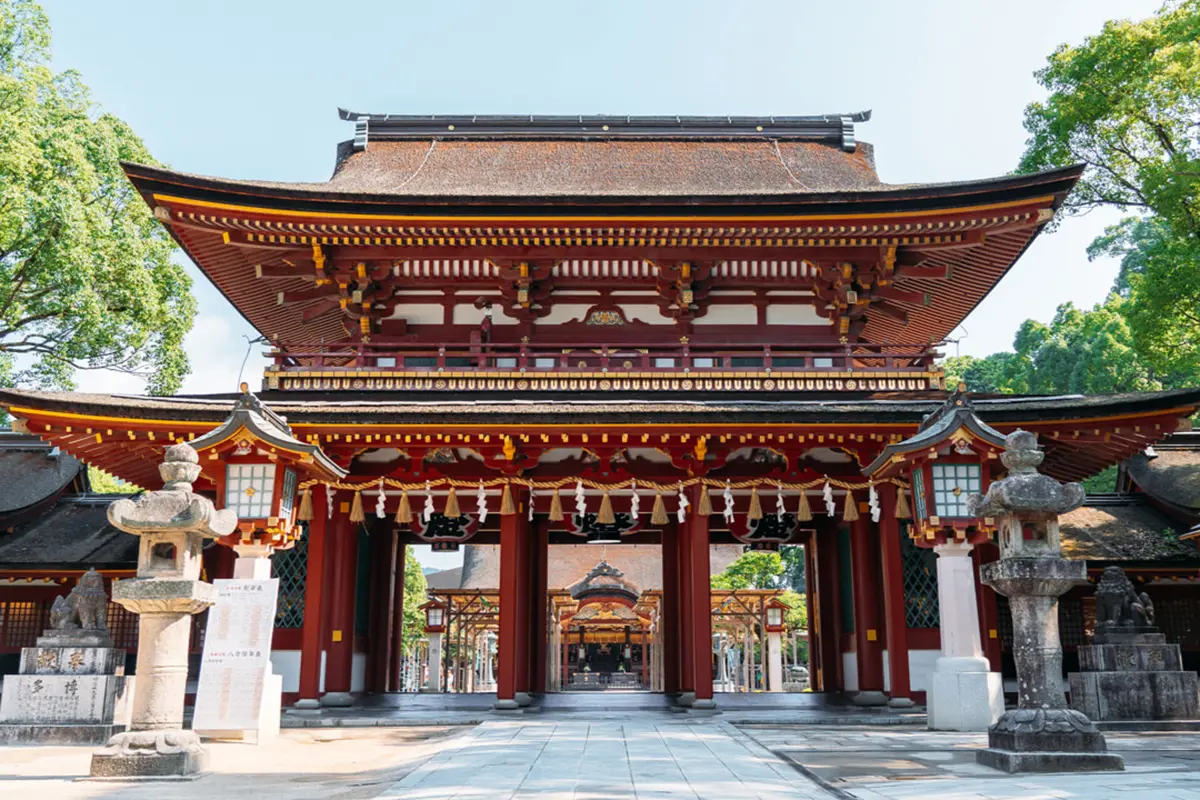Dazaifu Tenmangu: A Timeless Sanctuary of Learning and Culture
I have a great memory of visiting this shrine with my family when I was little. As I grew up in Fukuoka until I was 10 years old, we often took a family trip to Dazaifu Tenmangu. It is a shrine for academic success. Thus, many young students who are getting ready for entrance exams for their desired high schools or universities often visit. The shrine complex has a beautiful garden. My fondest moment was to float on the boat in the garden’s pond. Surrounded by cherry blossoms, it was an unforgettable experience. The Kyushu National Museum is a few minutes walk from this shrine.
Dazaifu Tenmangu was built over the grave of Sugawara Michizane (845–903), a revered scholar, poet, and politician of the Heian Period. Known as the head of over 12,000 Tenjin shrines nationwide, the shrine is not just a shrine but a sanctuary that bridges the ancient with the contemporary, attracting more than 10 million visitors each year with its profound historical significance and vibrant cultural events.
Sugawara Michizane, or Tenjin, the deity enshrined here, is celebrated for his extraordinary intellect and contributions to literature and education. His unjust exile and subsequent deification have led to Dazaifu Tenmangu being regarded as the most important Tenmangu Shrine, alongside Kyoto’s Kitano Tenmangu. The shrine’s grounds, covering over 3,000 acres, are home to the honden (main shrine), auxiliary and branch shrines, a treasure house, and the enchanting shinji ike pond, shaped to resemble the kanji for “heart”.
A striking feature of Dazaifu Tenmangu is the 6,000 ume (Asian plum) trees that dot its landscape, blooming in vibrant hues from late February to mid-March. Among these, the legendary Tobiume stands out, a tree that, according to lore, flew from Kyoto to Dazaifu to be with Michizane in exile. This plum tree symbolizes loyalty and enduring bonds, mirroring Michizane’s profound connection to his beloved trees.
The shrine complex is a hub of educational and cultural enrichment, boasting the Dazaifu Tenmangu Museum and the Kanko Historical Museum. These institutions house invaluable treasures and dioramas that narrate Michizane’s life and the historical context of his time, offering insights into his scholarly pursuits and the circumstances leading to his exile. For a deeper dive into the region’s history and culture, the nearby Kyushu National Museum presents extensive collections that further illuminate Michizane’s era and beyond.
Visiting Dazaifu Tenmangu is an experience that transcends mere sightseeing. The approach to the shrine is a journey through time, with the road lined with shops selling traditional umegae mochi and unique ice cream flavors, leading to the tranquil shrine grounds that provide a respite from the bustling city life. Here, one can witness the solemn beauty of shrine maidens performing worship dances and explore the art installations that blend spiritual and creative realms.
Dazaifu Tenmangu’s significance extends beyond its role as a shrine; it is a vibrant cultural center that hosts an array of events and festivals, showcasing both traditional and contemporary art forms. From the serene beauty of its ancient camphor trees to the innovative art programs, Dazaifu Tenmangu embodies a unique blend of spirituality, culture, and the arts, making it a must-visit destination in Fukuoka for anyone seeking to connect with Japan’s rich historical tapestry and dynamic cultural scene.
In essence, Dazaifu Tenmangu is more than just a shrine; it is a living museum, a center for learning, and a beacon of culture that has stood the test of time, inviting all to explore its sacred grounds and partake in its timeless traditions. Whether you are drawn by the allure of its historical legacy, the beauty of its natural surroundings, or the vibrancy of its cultural events, Dazaifu Tenmangu offers an enriching and unforgettable experience that resonates with the spirit of learning and the arts for more than a millennium.
